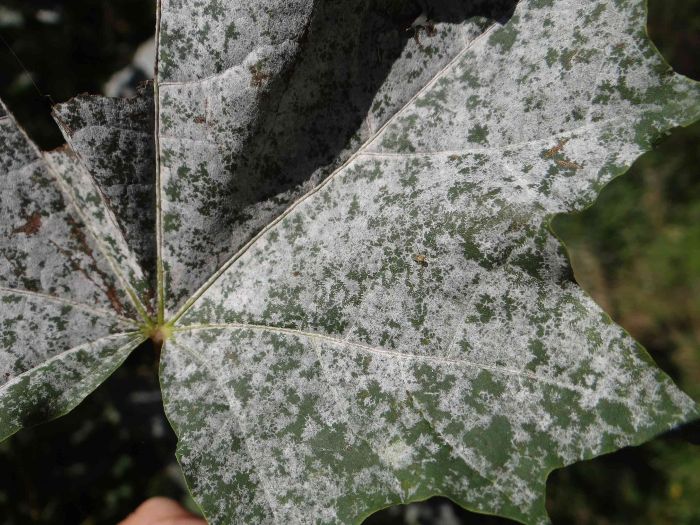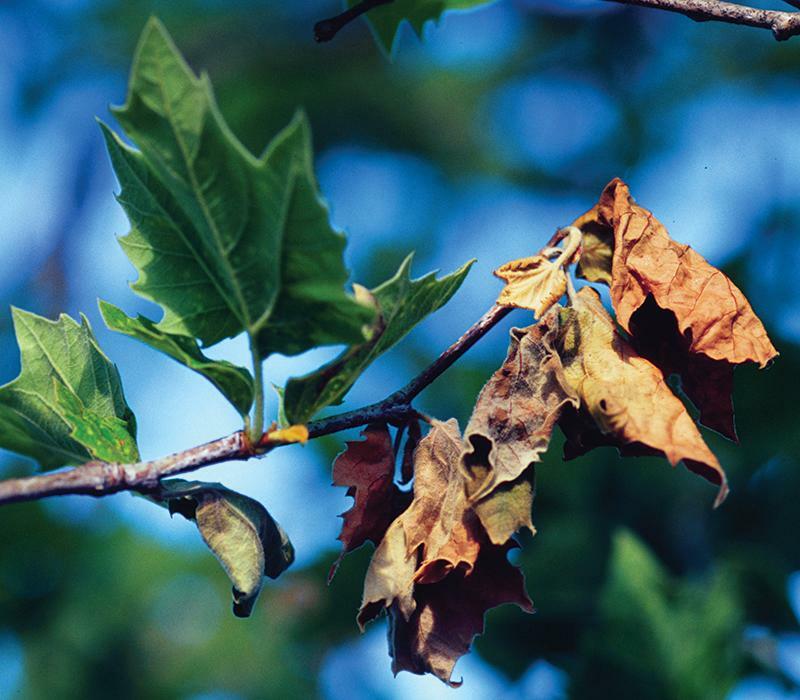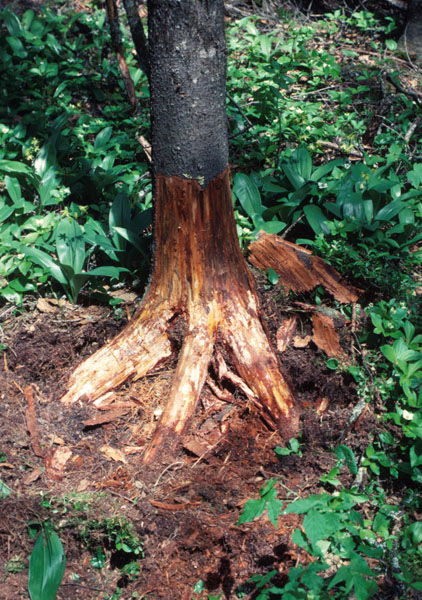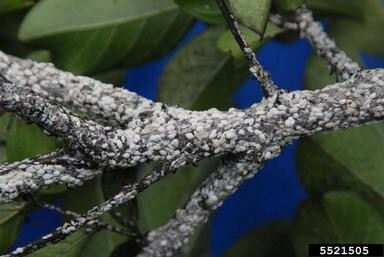Crape myrtles, also spelled crepe myrtles, are well loved for their compact size and vibrant blooms that can jazz up any landscape with a splash of color. These hardy, ornamental trees are known for their long flowering season and adaptability. However, even these resilient beauties aren’t fully immune to tree pest and disease issues. From fungal infections to root problems, crape myrtles can face various challenges that threaten their health and aesthetic appeal. Use this guide to identify and prevent common diseases so you can keep your crape myrtles thriving!
Common Diseases of Crepe Myrtle Trees
Routine assessments are crucial for catching diseases early and applying effective treatments. Below are some of the most common ailments affecting crape myrtles and how to recognize them.
Powdery Mildew
One of the most common diseases of crape myrtles, powdery mildew is caused by fungal spores that thrive in warm, humid conditions.
- Symptoms: A white, powdery coating appears on leaves, buds, and flowers, often leading to stunted growth or distorted blooms.
- Why It Happens: Poor air circulation, high humidity, and dense canopies create the ideal environment for this fungus.

Cercospora leaf spot
Cercospora leaf spot is another fungal disease that can reduce the vibrancy of your crape myrtles.
- Symptoms: Yellow or reddish spots appear on leaves, which eventually fall off, leaving trees looking sparse and unhealthy.
- Why It Happens: High rainfall, excessive irrigation, and wet foliage contribute to its spread, especially during the growing season.
Anthracnose
This fungal disease affects crape myrtles by targeting their leaves, flowers, and stems.
- Symptoms: Irregular brown or black spots develop on leaves and flowers. In severe cases, it can cause leaf drop and flower blight.
- Why It Happens: Cool, wet weather during spring and early summer often triggers anthracnose outbreaks.

Root rot
Root rot can be a silent killer for crape myrtles, attacking below the surface and going unnoticed until the tree’s health visibly declines.
- Symptoms: Wilting leaves, stunted growth, and discolored or mushy roots are telltale signs.
- Why It Happens: Overwatering and poorly draining soils create waterlogged conditions that foster fungal growth.

Key Factors That Can Lead to Crape Myrtle Diseases
Tree diseases rarely occur in isolation. They are often the result of multiple factors coming together to create the perfect condition for infection.
Environmental Factors
Crape myrtles are pretty hardy, but their health can still be compromised by environmental stressors like extreme temperatures, high humidity, and prolonged wet conditions. Poorly drained soils and areas with limited sunlight also increase susceptibility to diseases.
Pests and Insects
Tree pests often act as vectors, carrying pathogens that infect crape myrtles. Aphids, for instance, can spread sooty mold, while other insects may weaken the tree’s natural defenses, making it more susceptible to fungal infections.
Neglected Care
Lack of routine maintenance, such as pruning or soil management, can lead to overgrown canopies, poor air circulation, and compacted roots. Neglecting care allows diseases to establish and spread more easily.
Signs and Symptoms to Spot Early Crape Myrtle Diseases
Identifying diseases accurately and early is critical for successful treatment. Look for:
- Leaf Changes: Yellowing, browning, or spotting of leaves.
- Bark and Stem Issues: Cracking, peeling, or discoloration.
- Flower Problems: Blighted blooms, discoloration, or premature dropping.
- Overall Tree Health: Wilting, stunted growth, or leaf drop may indicate underlying issues.

Prevention Tips for Each Crepe Myrtle Disease
- Powdery Mildew: Improve air circulation by pruning dense canopies and planting in sunny, open areas. Apply fungicides when needed.
- Cercospora Leaf Spot: Water at the base of the tree rather than overhead, and avoid overwatering. Consider fungicide treatments during wet seasons.
- Anthracnose: Keep the area around the tree clean of fallen leaves and debris. Apply fungicides during cool, wet periods.
- Root Rot: Ensure proper drainage by planting in well-aerated soil. Avoid overwatering and use raised beds in poorly drained areas.
Long-Term Maintenance to Keep Crepe Myrtles Healthy
Healthy crape myrtles are better equipped to resist diseases and pests. Follow these tree care tips for long-term maintenance:
- Pruning: Regularly prune to remove dead or diseased branches and improve air circulation.
- Soil Health: Test soil periodically to ensure proper pH and nutrient balance. Mulch to retain moisture and regulate temperature.
- Watering Practices: Water deeply but infrequently, focusing on the tree’s root zone.
- Pest Management: Monitor for pests and use organic or chemical treatments as necessary.
Conclusion
Crape myrtles are a delightful addition to many landscapes, but they benefit from proper care to stay vibrant and healthy. With this guide, you can help ensure that your crape myrtle remains a stunner in your landscape. Keep your crape myrtle trees healthy by contacting us today!





